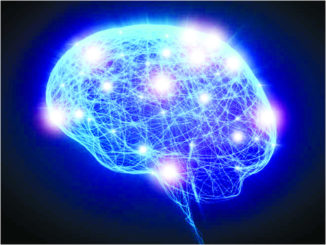
Vedangas literally mean the limbs of the Vedas. They are six in number. Just like the limbs of the body, they perform various supportive and augmenting functions in the study, preservation and protection of the Vedas and the vedic traditions. The six Vedangas are Siksha, Chhanda, Vyakarana, Nirukta, Jyotisha and Kalpa. These subjects were an integral and essential part of ancient vedic education system, aimed to promote an all round development of the students with a better understanding of the Vedas and vedic practices.
Of these six subjects, Siksha deals with the study of sounds and pronunciation associated with each syllable; Chhanda with the mastery of rhyme and meter; Vyakarna with the study of word and sentence structure; Nirukta with the meaning of complex words and phrases; Jyotisha with the study of heavenly bodies to find an auspicious time for the performance of the rituals; and Kalpa with the ethical , moral and procedural percepts associated with the performance of rituals as a way of life. In the following paragraphs we will discuss each of these subjects in detail.
The importance of Vedangas
The Vedangas played an important role in maintaining the purity and integrity of the Vedic tradition. Although they have lost of much of their ancient significance, they continue to occupy an important place in the academic study of the Vedas. For centuries they taught and continue to teach vedic students how to recite the vedic hymns, understand their meaning and perform the various rituals and ceremonies strictly according to the established procedures. Their study inculcates among its students a sense of discipline and respect for tradition and helps them conduct themselves in society as upholders of the vedic dharma and traditional family values.
To a certain extent the Vedangas were responsible for the popularity of Sanskrit as the main language of communication in ancient India and for its emergence as the language of the elite through such works as those of Kalidasa and Kalhana. They also played an influential role in the development of native languages, education system and vernacular literature of the Indian subcontinent by providing the basic framework on which they could grow.
Many principles and practices of the Vedangas were taken up by other religious traditions such as Buddhism and Jainism which relied upon Sanskrit as their medium of communication and included in their education systems and religious practices. Through them they also extended their sway to other parts of the world such as China, Japan, Vietnam, Cambodia, Thailand, Malaysia, Tibet and Ceylon where they were used in the study of Buddhism and Buddhist literature and preservation of its traditions.
While the combined knowledge of the Vedas and the Vedangas is still a desirable prospect, with the decline of Sanskrit as the language of the elite and the emergence of new methods of devotional worship and agamic temple traditions which took precedence over the vedic traditions in many parts of India, the Vedangas have lost of much of their priestly relevance. However they continue to attract the attention of Indological scholars and serious students of the Vedas, because of their literary and historical value in our understanding of the development of human languages and linguistic and literary sophistication among the diverse socio religious and linguistic groups of the Indian subcontinent.
Siksha
Siksha deals with the study of pronunciation of words and syllables through the correct intonation, conjunction (sandhi) and disjunction (vichheda) of syllables, recognized primarily as vowels and consonants. It intends to train the students in the art and science of articulation of words and syllables so that they can chant the vedic hymns perfectly, producing the desired sound vibrations and maintain the ritual purity and efficacy of the ceremonies they perform.
A lot of importance was attached in ancient India to correct pronunciation of the Vedic hymns because of the belief that the Vedas were inviolable and divine in origin. The scriptures proclaimed that a Sanskrit syllable was God in the form of a syllable (askhara Brahman), an imperishable entity (a + kshara), revealed to the mortals for the sake of dharma and welfare of the world, just as the thunder that rumbled from the heavens or the subtle sounds that could be heard in meditation. Its medium was ether (space), the medium of gods. So no liberties could be taken or transgressions be made by mere mortals while chanting them, without attracting unhappy consequences for themselves and those for whom the were sung. As a result of these beliefs, Sikhsa developed into a separate branch of study to preserve the integrity and purity of the divine words and save the dharma from human fallibility.
The teachings of the Siksha are contained in the ancient texts known as Pratisakhyas, each attached to a particular Samhita, providing instructions for the recitation of the hymns contained in it. The Pratisakhyas were probably composed by many grammarians like Saunaka before Panini and revised from time to time.
Siksha played an important role in vedic India at a time when there was no written script and the knowledge of the Vedas had to be transmitted from one person to another orally. By establishing the ground rules of proper pronunciation, it minimized the chances of distortion that would usually accompany verbal communication. Vedic students were required to spend years reciting the mantras using the principles enunciated in the Pratisakhyas under the careful watch of their teachers before they were allowed to return to their homes and become ordained priests. As young apprentices they could ill afford to risk their careers by deviating from established traditions or show any sign of incompetence or imperfection due to lack of mastery.
Chhanda
Chhanda deals with the analysis of the types of meter used in the construction of various Vedic hymns. Chhandashastra of Pingalanaga is considered to be the oldest text available on the subject. It was probably composed between 6th and 5th Century BC. In Sanskrit, the metrical unit is known as pada (foot). Depending upon the number of syllables used, a pada may be of the length of eight, eleven or twelve syllables, known as gayatri, tristubh and jagati respectively. There are other metrical schemes and further variations in the classification of the padas (meters) depending upon different criteria, the discussion of which is outside the scope of this article.
The knowledge of the Chhanda proved useful in the composition of the smriti literature. It also played an important role in the emergence of classical Indian music and Sanskrit poetry besides providing a frame work of reference for compositions in other languages.
Vyakarna
Vyakarna deals with Sanskrit grammar or the analysis and decomposition of words, word formation, root words and complex sentence structures, providing useful insights into the usage of words and sentences leading to the mastery of the language. The most authoritative work on the subject is considered to be the Ashtadhyayi of Panini, who lived probably between the 5th and 6th Century BC. Considered to be a milestone in the historical development of Sanskrit language, the Ashtadhyayi is probably a representative work summarizing the prevailing traditions and preserving them for posterity.
It assumed so much importance over a period of time that most of the works on Sanskrit grammar preceding it lost their significance and were considered not worth preserving. The Ashtadhyayi contains about 4000 sutras or aphorisms divided into four parts. Siva Sutras deal with phonetics or the accent and intonation of distinctive units of sound that form part of the word and letter sounds. Ashtadhyayi deal with the structure of words and sentences and their construction.





Be the first to comment